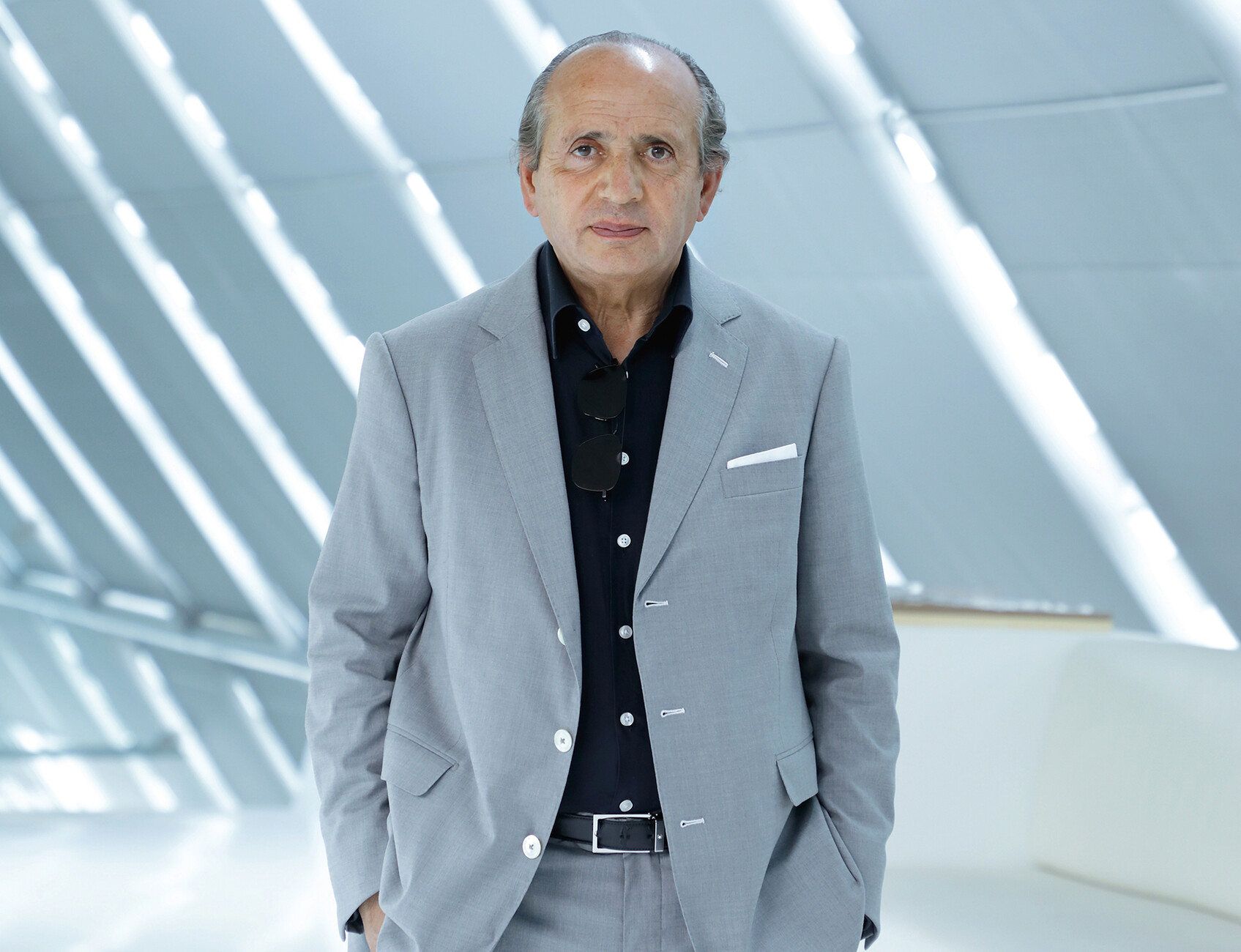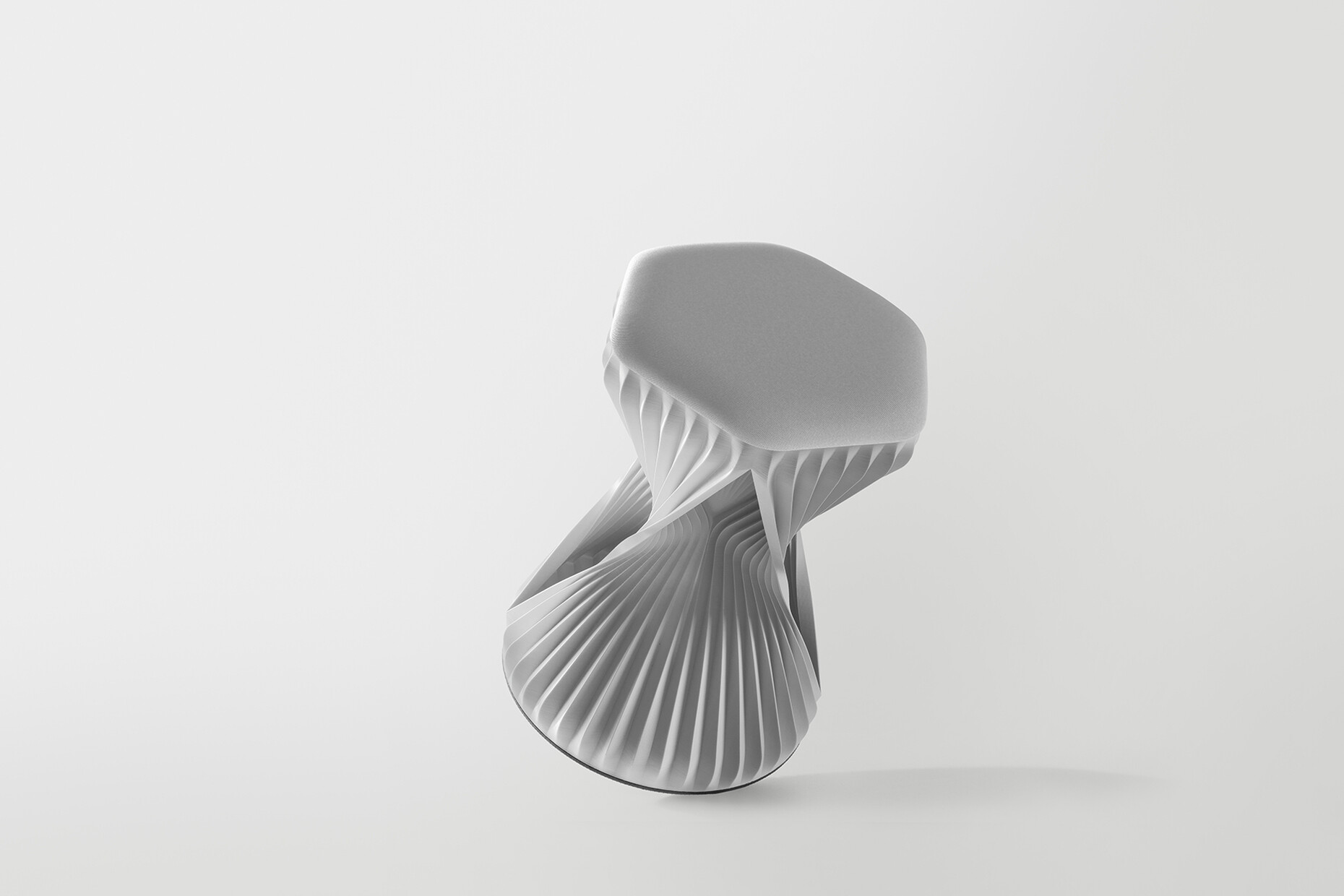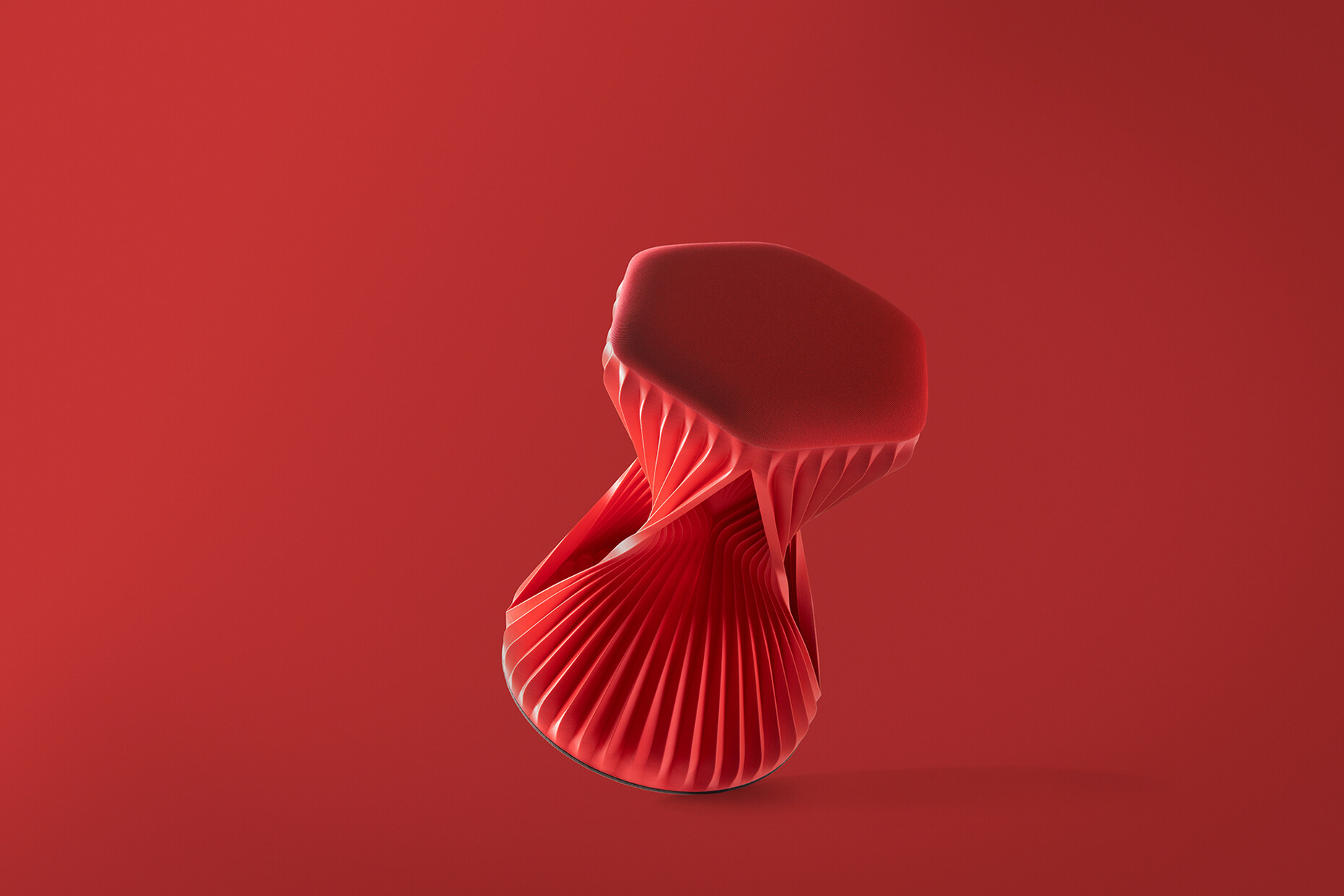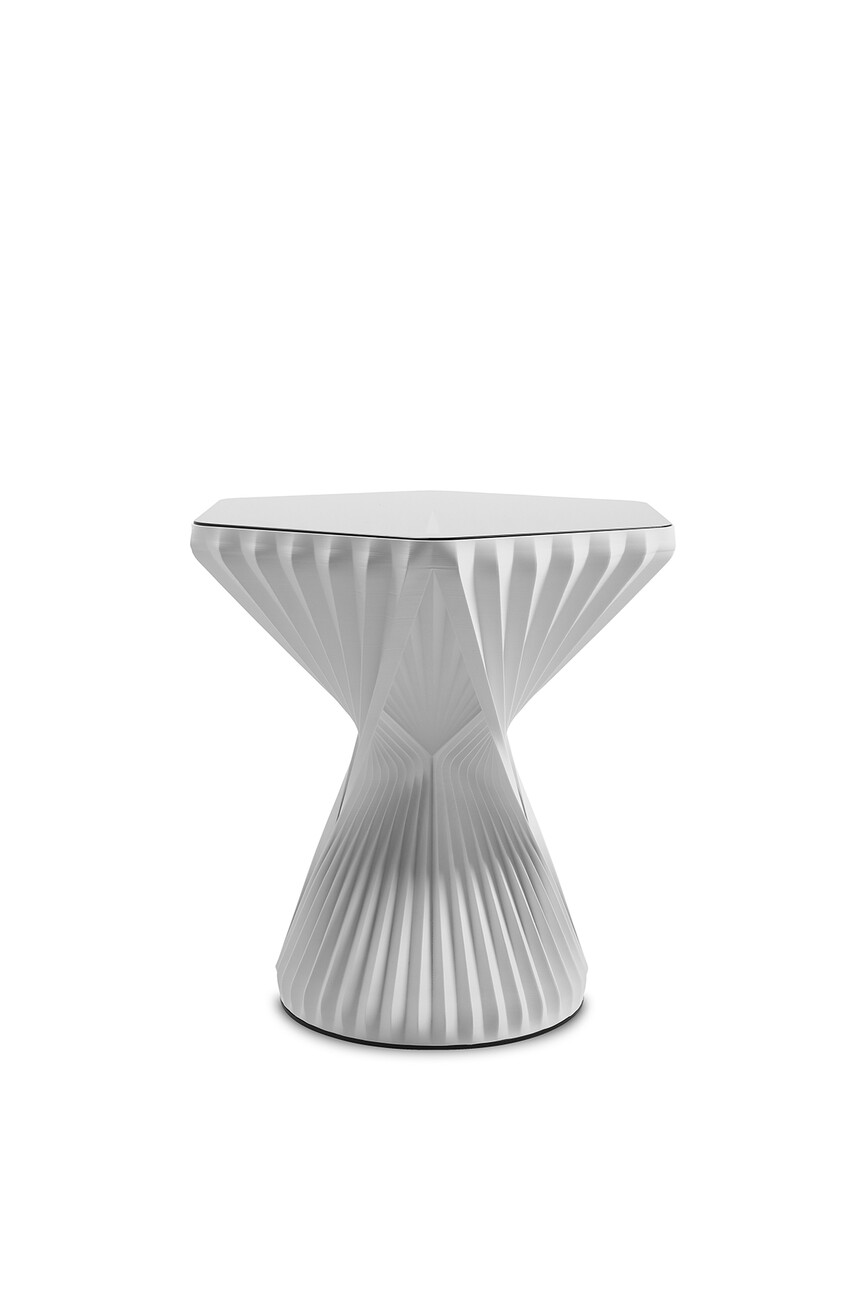STYLEPARK WAGNER
The joy of experimentation
Anna Moldenhauer: How did the collaboration with Wagner come about?
Hadi Teherani: Peter Wagner and I met at trade fairs and kind of wandered around each other until we said, "Let's do a project together". As Wagner Living was already experimenting with 3D printing together with Thorsten Franck at the time, it was a good opportunity.
The description of the minimal surface by mathematician H.F. Scherk from 1885 served as inspiration for the basic shape of the stool - what fascinated you about it?
Hadi Teherani: It should be a stool that can be used as a stool. It had to function both statically and ergonomically. To achieve this, we first had to calculate a stable structure and then we had to do the finishing touches so that the 3D printing would run smoothly. We started with a smooth surface and the shape was also determined by the necessary statics. The minimal surface was an inspiration at the beginning. We wanted to produce something that could not be realised with any other process. We also wanted to test the limits of 3D printing and experiment with which shapes are possible compared to conventional manufacturing methods.
One of your quotes is "the design is already there, you just have to recognise it". What was the obvious solution for the "W3D" that you visualised?
Hadi Teherani: The computer also assisted us in our realisation, i.e. the form was already there, but the path to it was not yet complete. The shape of the stool also shows parametric structures that have been used in architecture for centuries.
The collection is now being expanded to include tables - what can visitors expect to see in Milan?
Hadi Teherani: The tables will be produced in three different heights so that they match the versions of the stools, for example as high tables. We also offer material combinations such as glass and Fenix chrome, as the design leaves plenty of scope in terms of material and colour. The integration of light is also planned. Producing the large tables in 3D printing was a particular challenge.
The "W3D" can be produced in series and is made from renewable raw materials. What was necessary to realise this vision?
Hadi Teherani: The will. Our approach is holistic, so the question of sustainability is a natural one. We had to check how the material would behave in the thematic conditions and whether it would remain stable. The bio-plastic is currently very expensive because it is made from nature-based raw materials. If the demand for the product increases, this will also change. The main thing in breaking new ground is to take the first step.
The Bauhaus philosophy is a role model for you, what would Marcel Breuer have said about the "W3D"?
Hadi Teherani: He would think it's wonderful. Sustainable future design, with materials reduced to a minimum.
You recently published your biography with Matthias Gretzschel - and reviewed every stage of your training and career. Is there anything that you recognised anew in the process?
Hadi Teherani: I felt more affirmation than wanting to do something different in retrospect. I would create the work I do today in exactly the same way. Without realising it, I already had the right feeling back then, the right approach for the paths. I also believe that you should make the contribution you can make to society.
Your mindset was open to experimentation right from the start; for example, you decided on your degree programme with a coin toss back then. How did this openness affect your design?
Hadi Teherani: That's right, I'm looking to the future with an open mind. I don't want to commit myself too early or follow any dogmas. What lies ahead should remain exciting. I don't presume to already know what is right and what is wrong, but want to find the solution in my work. I am only partially interested in the past, I have always designed for the future. You have to be free for the new and adapt your processes to social moods, new technologies and the requirements of sustainability. If your own rucksack is symbolically too heavy, it is difficult to break new ground.
Your design began in 2001 with a futuristic office chair - would a swivel chair also be an option for further collaboration with Wagner?
Hadi Teherani: Absolutely, if it is sustainable. When I work with a company, it's always about working out the DNA and developing ideas from there. For me, it's not just about the function, but about the whole, from the structure to the dignity of the product. We therefore combine architectural and design aspects in our work with Wagner Living.
Your outlook has always been optimistic - what advice would you give to young architects just starting out in the profession?
Hadi Teherani: There are always places available at the very front. When you have a vision, you shouldn't think about whether or not you can earn enough money with it. I have to love what I do, then the result is one hundred per cent on point. That's the only way to achieve success. What counts is passion, energy and an open mind.
Wagner @ Milan Design Week
Via Alessandro Manzoni 23, 20121 Milan
Opening hours:
16 to 19 April 2024, 10 am to 9 pm
20 April 2024, 10 am to 5 pm













